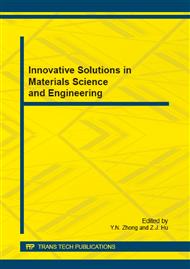p.280
p.285
p.289
p.293
p.298
p.302
p.306
p.310
p.314
Reverse Engineering Design of Vehicle Rear Axle Based on CATIA
Abstract:
Reverse engineering technology has been widely used in engineering design field. This paper proposed a CATIA-modeling-based reverse engineering technology for vehicle rear axle design. The general process for reverse engineering includes the pretreatment of the point cloud data, the establishment of the grid, the surface reconstruction of parts, the analysis of curved surface, and so on. Finally, the paper puted forward practical and feasible solution to the problem.
Info:
Periodical:
Pages:
298-301
Citation:
Online since:
November 2014
Authors:
Keywords:
Price:
Сopyright:
© 2015 Trans Tech Publications Ltd. All Rights Reserved
Share:
Citation:


